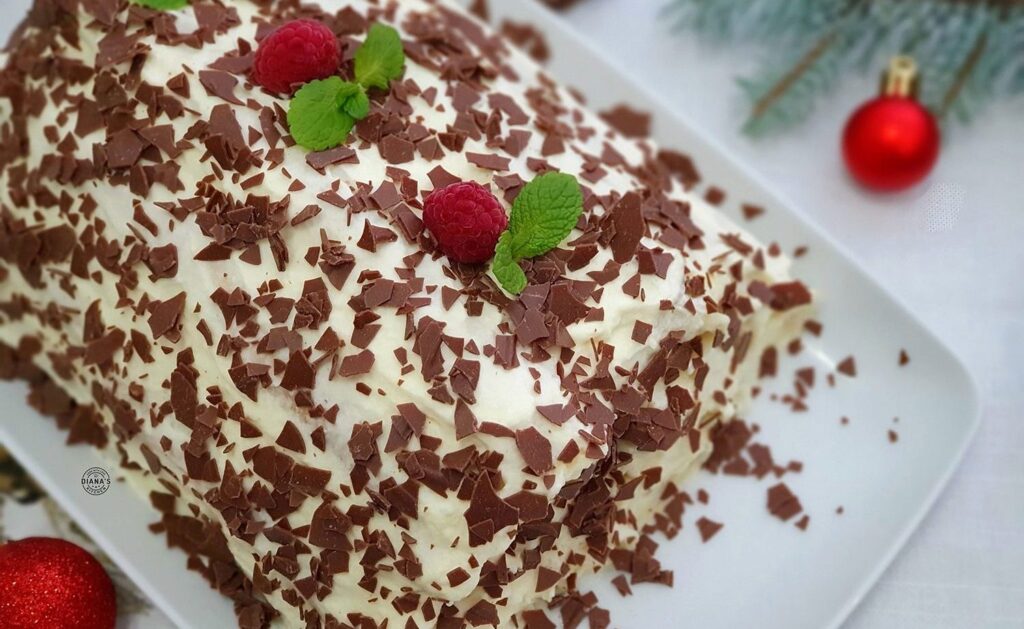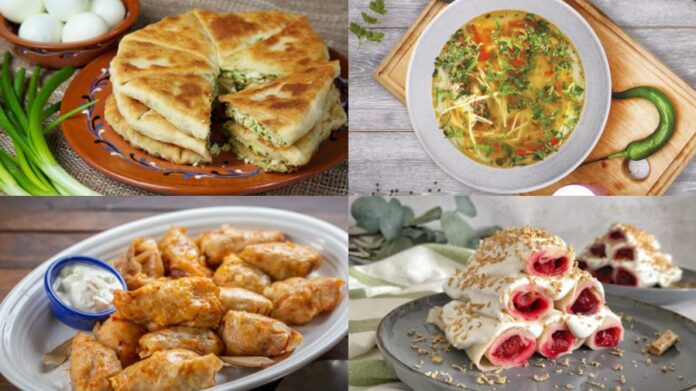Moldova – the paradise for all food enthusiasts. Besides its picturesque landscapes and traditions preserved since the time of our ancestors, our country is most appreciated for its delicious traditional dishes. Polenta, cabbage rolls, pies, and “cușma lui guguță” (a traditional hat-shaped dessert), are indispensable on Moldovans’ tables on holidays and beyond. We invite you to embark on a culinary adventure.
POLENTA
The most well-known dish in Moldovan cuisine is “mămăliga,” a type of polenta. It is prepared by boiling cornmeal in water with salt. Housewives say that mămăliga turns out delicious when it is boiled on low heat for at least 20 minutes and well stirred. It is traditionally made in a cast iron pot for the best taste, preferably on a wood-burning stove. It can be served with a variety of accompaniments, from cheese and sour cream to stews, sauces, and cabbage rolls.
It is more widely recognized around the world by its Italian name, “polenta,” but it is also found in other countries such as Hungary (“puliszka”), Switzerland, Croatia (“palenta,” “žganci,” “pura”), Slovenia (“polenta,” “žganci”), Bulgaria, Argentina (“polenta”), Ukraine (“culeșa”), and Mexico.


CABBAGE ROLLS (SARMALE)
They are known as “găluşte” or “sarmale” throughout our country. They are also found on the tables of Ukrainians, Romanians, Bulgarians, Gagauz people, Greeks, Hungarians, and others. These little dumplings hold a special place in our national cuisine. They are a staple at weddings, baptisms, birthdays, and memorial meals.
They are prepared from cabbage leaves (fresh or pickled) or grape leaves, rolled up into a cylindrical shape. Inside, there is minced meat, usually pork, mixed with rice and other ingredients. The shape of the cabbage rolls varies. In northern villages, they are made as small, crescent-shaped dumplings, while in the central part of the country, they are longer and larger. During holidays, they are boiled in special clay pots and then baked in the oven.

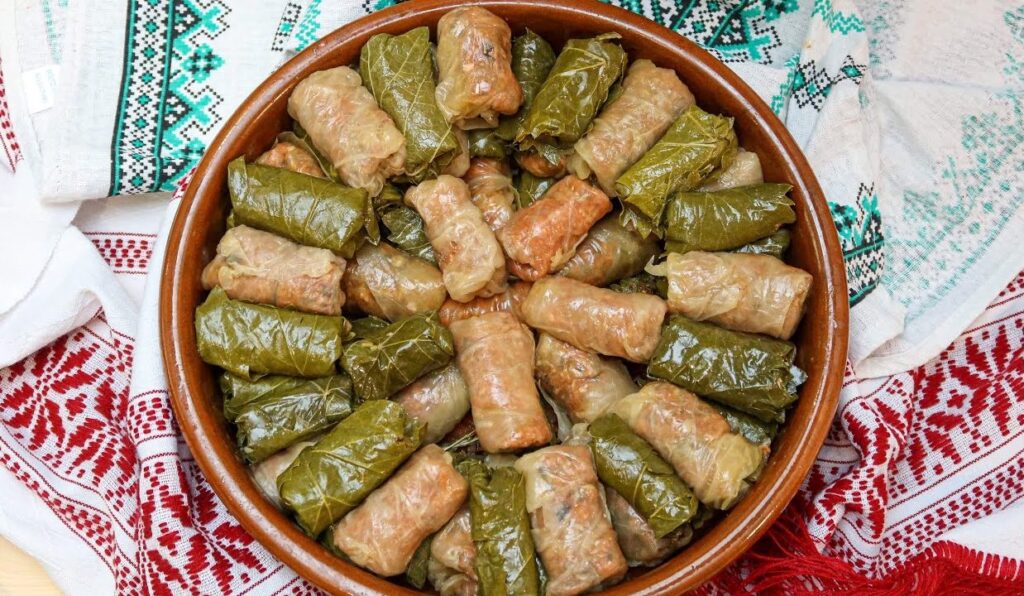
CHICKEN SOUP (ZEAMA)
Chicken soup is probably one of the most well-known dishes in Moldovan cuisine. It is prepared with chicken and homemade noodles, lovage, garden vegetables, and sour brine. Thanks to these ingredients, the soup has a slightly tangy and very delicious flavor.
Originally, the soup was cooked with only poultry meat, onions, and carrots. Over time, however, the recipe has been modernized, and additional ingredients have been added, such as potatoes, rice, lovage, and sweet peppers.
Moldovans know that homemade chicken soup is a good remedy for colds, hangovers, and digestive issues. At the same time, the soup is not recommended for those who suffer from diabetes or liver diseases.

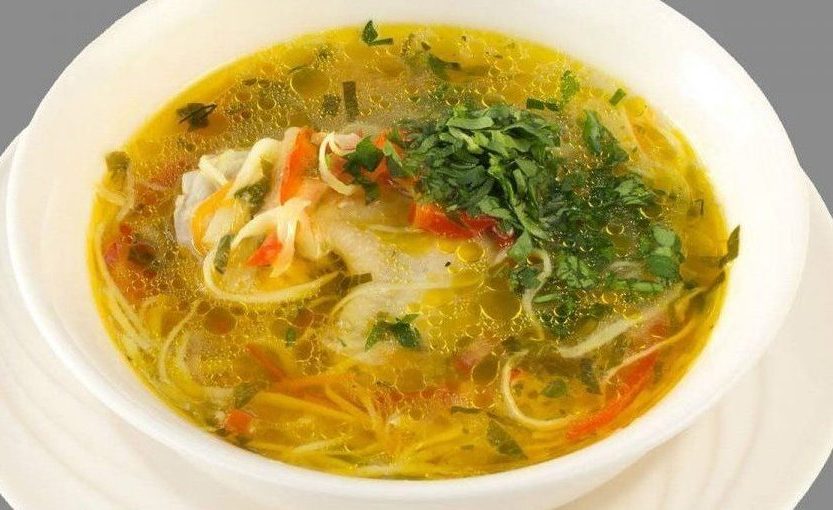
PASTRIES (PLĂCINTE)
Traditional pastries hold a special place of respect in our national cuisine, often mentioned by those who visit our country. In the past, these pastries were made only during gatherings, on Sundays, holidays, etc., and were served with a glass of cold wine from the cellar. Today, however, they are an everyday and festive food.
A “plăcintă” is a culinary dish made from dough with various fillings such as cheese, meat, potatoes, cabbage, pumpkin, sour cherries, etc. They are fried in oil in a pan or baked in the oven.
Even the name “plăcintă” is of Roman origin. In ancient times, there was a widely spread dish called “placenta,” a kind of pastry made with puff pastry dough, bay leaves, honey, and cheese. These pastries are very common not only in Moldova and Romania but also in southern Ukraine.

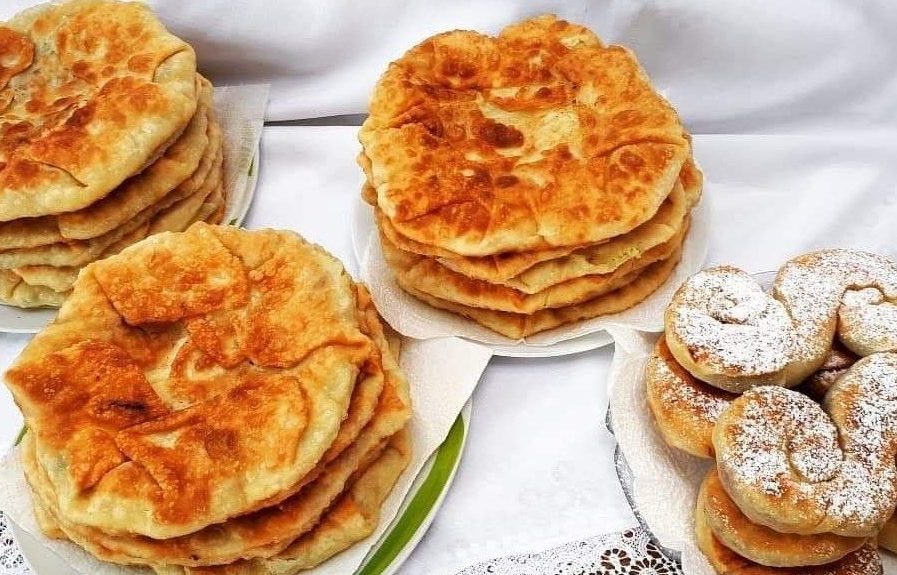
REDUCED BORSCHT
Reduced borscht is a dish that is based on two main ingredients: sauerkraut and pork ribs. It also includes onions, carrots, and tomato paste. It has a slightly tangy taste and is wonderful for a festive day, like Saint Basil’s Day.
Yes, you read that right! Reduced borscht is a recipe more suited for the winter, as during this time we have access to sauerkraut and are drawn to warm meals. It is predominantly prepared in the northern region of Moldova.
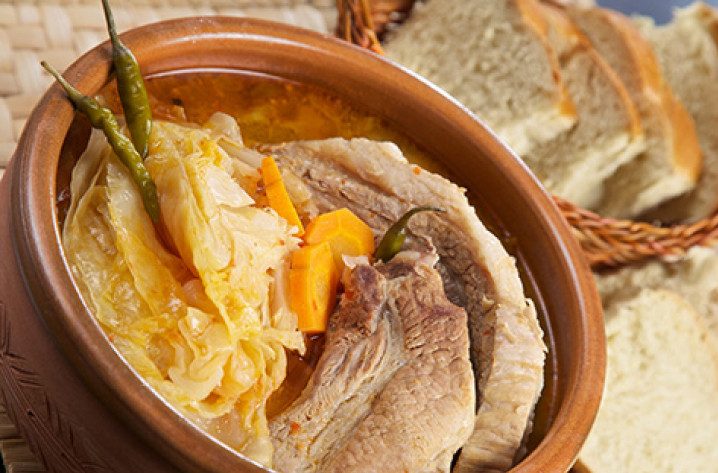
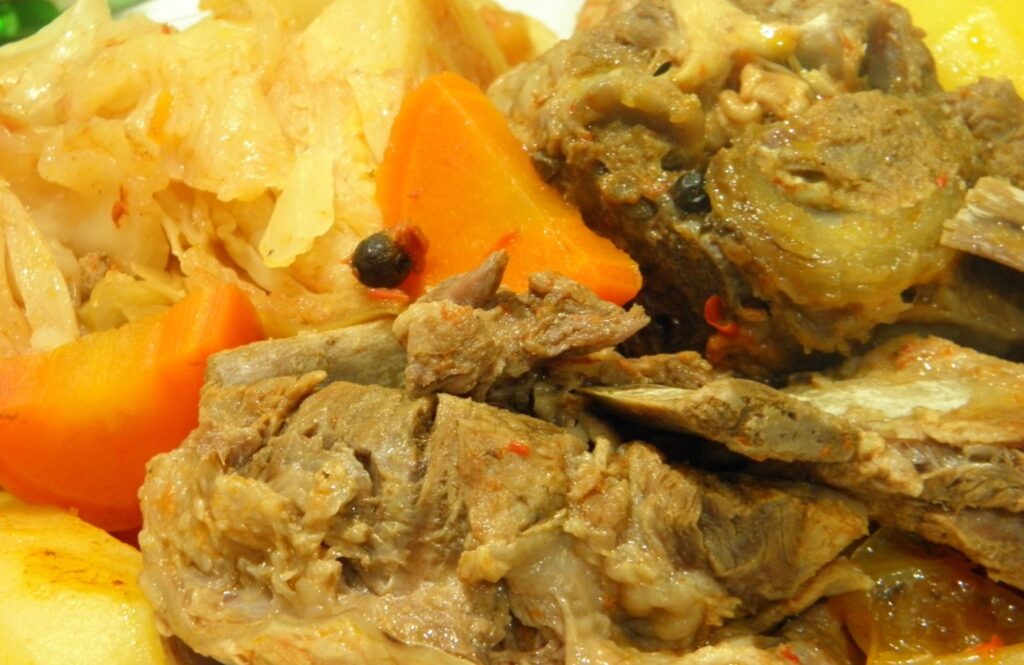
“BLACK BABA” CAKE
“Black Baba” cake is a traditional dish that homemakers have been preparing for years. It contains simple, even commonplace, ingredients like eggs, white flour, buttermilk, sunflower oil, vanilla extract, and baking soda. The dark color of the cake is not from cocoa but from the baking soda reacting with the buttermilk and oil during the extended baking time. The preparation technique is important and needs to be strictly followed.
Homemakers traditionally prepare the “black baba” cake in an aluminum pot. Typically, this dessert is accompanied by another specialty known as “White Baba.”
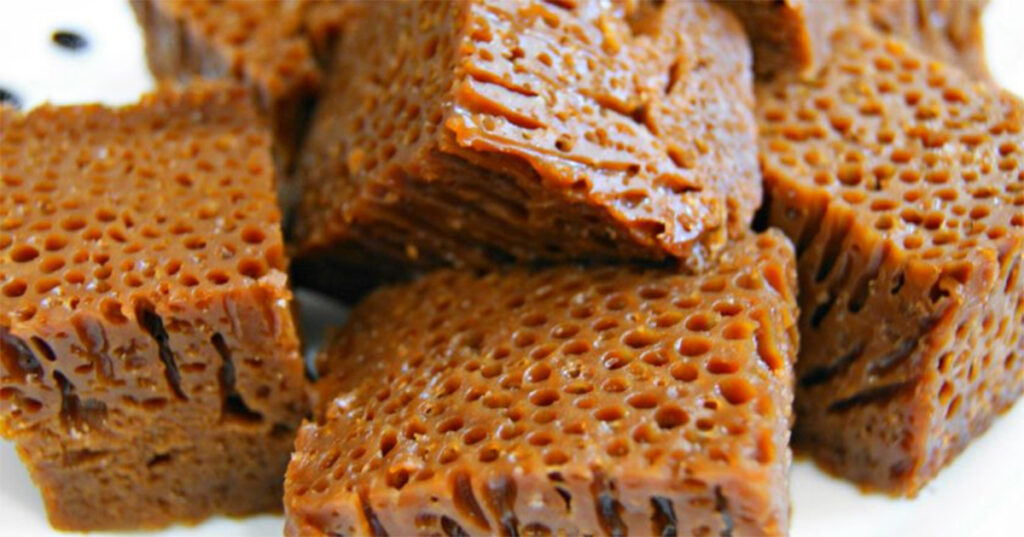

“GUGUTSA’S HAT” DESSERT
“Cușma lui Guguță” is a traditional Moldovan dessert that refers to Guguță, a character from children’s stories written by Spiridon Vanghelie, who wore a shepherd’s cap called “cușmă.”
This dessert is a must-have on Moldovans’ tables during any celebration. When sliced, this cake resembles the curls and triangular shape of Guguță’s hat.
It is made up of layers of crepes, fresh or preserved sour cherries, and a sweet sour cream filling, usually covered with dark chocolate.
